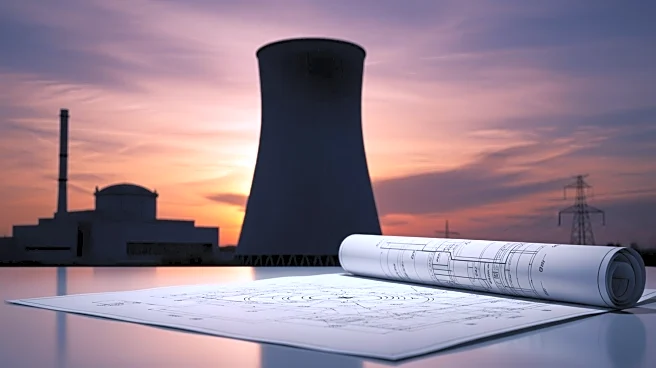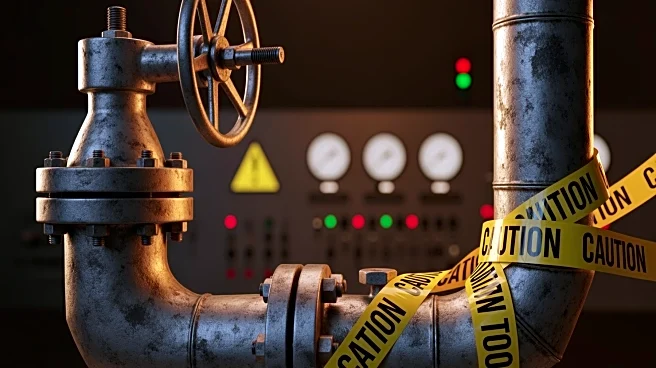What's Happening?
The UK government has announced that Wylfa, located on the island of Anglesey in North Wales, will be the site for the deployment of three Rolls-Royce small modular reactors (SMRs). This decision is part
of a broader strategy to establish a UK sovereign SMR capability with potential for export. The project is backed by over £2.5 billion in government funding and aims to deliver power by the mid-2030s. The initiative is spearheaded by Great British Energy–Nuclear (GBE-N), a publicly owned entity tasked with overseeing the SMR program. The site could potentially host up to eight mini reactors, according to government assessments. The SMR fleet is designed to attract private investment, strengthen the UK supply chain, and reduce reliance on imported energy. GBE-N plans to begin site activity in 2026 and is committed to engaging with local communities to ensure the project delivers lasting value and maintains public trust.
Why It's Important?
The deployment of SMRs at Wylfa represents a significant step in the UK's efforts to expand its nuclear capacity to 24 GW by 2050. This project is crucial for reducing the country's dependence on imported energy and enhancing energy security. The SMR technology, developed by Rolls-Royce, is expected to bolster the UK supply chain and attract private investment, potentially leading to economic growth and job creation in the region. Additionally, the project aligns with the UK's strategy to reassert public ownership in major nuclear projects, which could have long-term implications for the country's energy policy and infrastructure development. The initiative also positions the UK as a leader in SMR technology, with potential export opportunities that could strengthen its global economic standing.
What's Next?
GBE-N is expected to begin site activity in 2026, with the ambition for Wylfa's SMRs to supply power to the grid by the mid-2030s. The UK government has tasked GBE-N with identifying potential sites for another large-scale nuclear plant, with a report due by fall 2026. This assessment will include sites across the UK, including Scotland, and any future large-scale project would be similar in scale to existing projects like Hinkley Point C. The government is also exploring other SMR developers, indicating that the Wylfa decision does not preclude additional SMR projects. The ongoing development of SMRs is part of a broader wave of U.S.-UK nuclear cooperation, which could further accelerate licensing and export pathways for advanced nuclear technologies.
Beyond the Headlines
The Wylfa site has a storied history in British nuclear development, having previously hosted the Wylfa Nuclear Power Station, which operated from 1971 to 2015. The site's selection for the new SMR fleet underscores the UK's commitment to revitalizing its nuclear industry and leveraging historical sites for future energy projects. The government's acquisition of the Wylfa site marks a significant move towards public ownership in nuclear development, a shift from previous private-led initiatives. This decision could influence future policy decisions regarding nuclear energy and public ownership, potentially setting a precedent for other countries considering similar strategies.












